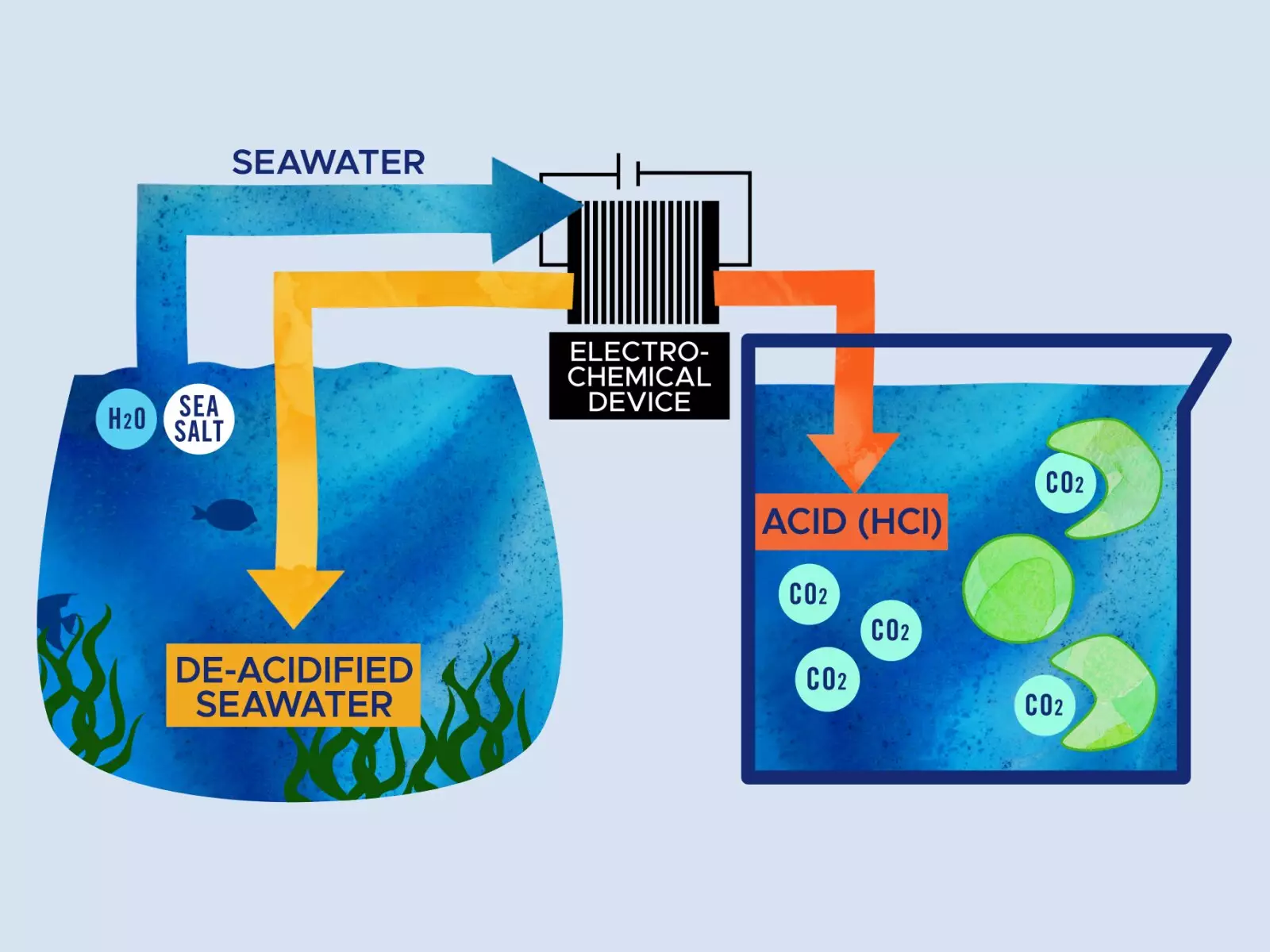Marine algae play a crucial role in our ecosystem, from producing oxygen through photosynthesis to feeding fish and shellfish. But aside from their ecological importance, researchers are exploring the potential of marine algae in creating eco-friendly plastics or fuel. However, the process of growing algae commercially, known as aquaculture, often requires a significant amount of carbon dioxide to accelerate growth. This carbon dioxide is typically sourced from natural gas refineries, creating emissions during processing and transportation that negate any carbon dioxide removal benefits from algae cultivation.
One solution to making aquaculture more carbon neutral lies in combining algae cultivation with marine carbon dioxide removal (mCDR). Researchers from the Department of Energy’s Pacific Northwest National Laboratory (PNNL) have proposed a method that involves using the acid byproduct of an electrochemical process to increase ocean alkalinity to promote faster algae growth. By utilizing this method, researchers aim to address the sustainable utilization of the acid byproduct, which is a key barrier to scaling up some electrochemical mCDR techniques.
Ocean acidification, a consequence of climate change, poses a significant threat to marine life. As excess carbon dioxide is absorbed by the ocean, its pH decreases, leading to acidic seawater. This acidic environment can harm marine organisms such as snails, clams, and corals. To counteract ocean acidification, scientists have developed an electrochemical technology called bipolar membrane electrodialysis, which generates acidic and basic streams from seawater. The basic stream can be returned to the ocean to enhance alkalinity, potentially neutralizing acidification and facilitating carbon dioxide absorption.
Algae are known for their carbon-capturing capabilities, making them a promising candidate for removing excess carbon dioxide from the atmosphere. In laboratory experiments, researchers have demonstrated that adding the acidic stream generated by electrochemical processes to algae cultivation promotes faster growth. The acid enhances the availability of carbon dioxide, which the algae utilize for photosynthesis. This symbiotic relationship between algae and the acidic stream can significantly increase algae growth rates, paving the way for a more sustainable aquaculture industry.
By integrating electrochemical marine carbon dioxide removal with aquaculture practices, researchers envision a future where algae cultivation could be used to produce biofuels or sustain the shellfish industry. This innovative approach not only boosts algae growth but also addresses the challenges associated with carbon neutrality in aquaculture. Ultimately, combating climate change requires a multifaceted approach that leverages natural processes like photosynthesis alongside technological advancements.
The synergy between algae cultivation and carbon dioxide removal represents a promising avenue for enhancing the sustainability of aquaculture and mitigating the effects of climate change. By harnessing the carbon-sequestration potential of marine algae, we can move towards a more eco-friendly and efficient system of food and fuel production. The future of aquaculture lies in embracing nature-inspired solutions that harmonize with our environment for a healthier planet.


Leave a Reply